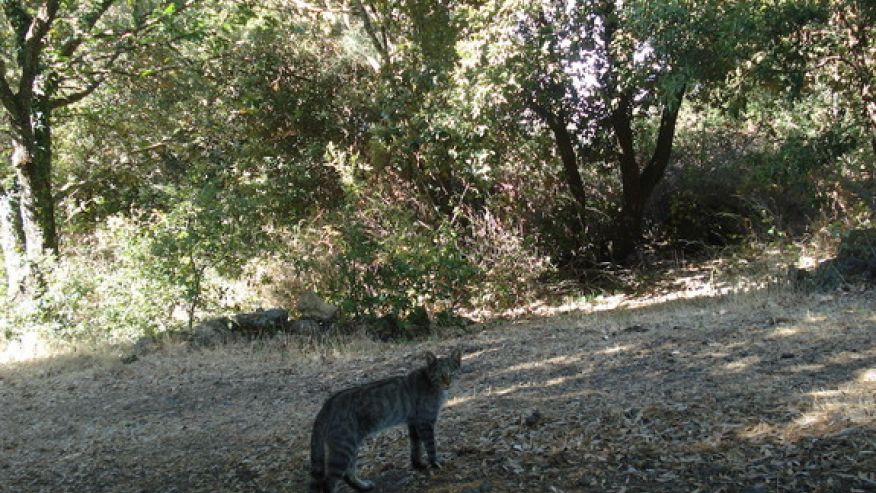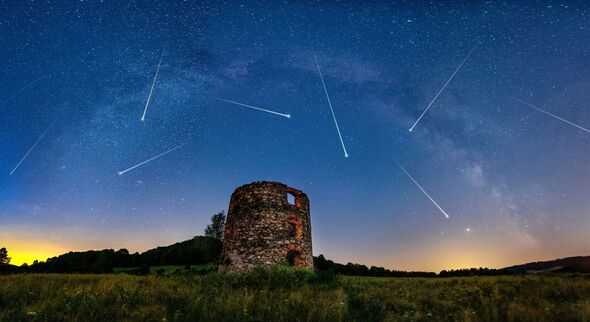The European wildcat looks like a large tabby cat with a bushy tail.Stefano Anile
A healthy population of European wildcats has been discovered living in the forest surrounding Mount Etna, an active volcano in Sicily, researchers say.
The rare, elusive wildcats typically avoid people, making them difficult to study. By tallying the cat’s numbers across Europe, researchers hope to understand how urgently the animals need outside protections, such as habitat safeguards, said Stefano Anile, the study’s principal investigator and an independent wildlife researcher in Sicily.
ADVERTISEMENT
ADVERTISEMENT
The study is among the first to show how many European wildcats live on Mount Etna. During his survey work using heat- and motion-sensing cameras and DNA analysis of fresh wildcat scat, Anile found that roughly 14 wildcats live in an area of 4 square miles. [See photos of the European wildcat on Mount Etna]
Over a period of four months, Anile used 18 remote cameras to photograph the wildcats, examining the markings on their fur coats to tell them apart. He placed the remote cameras on paths frequented by the wildcats and their kittens. Each station included two cameras to capture images of both sides of the cat.
The researcher also used a genetic analysis of scat samples to determine the number of wildcats and their sexes.
“To get the best information, you really need to combine these different methods, because they give you different information,” said Andrew Kitchener, principal curator of vertebrates of National Museums Scotland, who was not involved in the research.
Both Kitchener and Anile are members of a newly formed consortium called EUROWILDCAT, a collaboration of scientists working to raise awareness and answer basic research questions about wildcats, such as how the animals interact with one another and behave around domestic and feral cats as wildcat habitat shrinks.
The European wildcat is more distantly related to the domestic cat than the wolf is to the dog, Anile said. Domestic cats likely descended from the wildcat family in the Near East at around the time of agricultural development, a 2007 study in the journal Science reported. In contrast, the European wildcat, another branch of the wildcat family, has stayed wild.
Just like some domestic cats and their abandoned relatives, or feral cats, European wildcats are extremely cautious around people.
“The few times you can spot it, you can definitely see that they don’t want to share anything with you,” Anile said. “They are wild animals. They want to do their business and stay as much as they can away from humans.”
The trained eye can tell wild and domestic cats apart, Kitchener told Live Science. Wildcats look like large tabby cats that have thick, bushy tails with a black tip. A black stripe runs down the middle of their backs and stops at the tail. For domestic cats, that stripe continues down the tail.
European wildcats also have thicker and wavier stripes on the backs of their necks, unlike the domestic tabby, which often has four thin stripes on its neck.
Despite these differences, European wildcats have started mating with domestic cats across Europe, with documented cases in Scotland and Hungary. The new study did not find any evidence of hybridization in the genetic samples; other research has shown lower hybridization levels between European wildcats and domestic ones in France, Spain, Portugal and Germany than in the rest of Europe. But the trend is still worrying, researchers say.
“That’s why there’s been a group of organizations in Scotland that have been developing a Scottish wildcat conservation plan with the aim of trying to preserve the wildcat,” Kitchener said.
One way of doing that is to protect the wildcat’s habitat, which is disappearing as urban areas expand.
“We live on this beautiful island, and the wildcat is one of the last wild predators that we have,” Anile said. “I don’t want this beautiful area to be full of a network of roads and other buildings.”
The study was published in the August issue of the Journal of Zoology.






